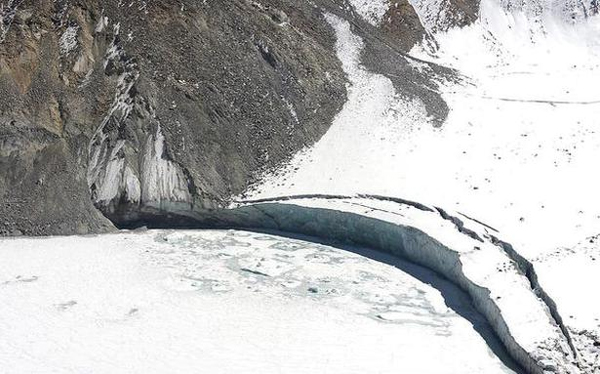Glaciers in Suru Basin retreating at rapid pace
*Thrust laid on training drills for locals, setting up of EWS
Mohinder Verma
JAMMU, Mar 20: As the Himalayan glaciers are retreating at a rapid rate due to climate change, the Department-Related Parliamentary Standing Committee on Home Affairs has asked the Union Ministry of Home Affairs to take immediate steps to deal with Glacial Lake Outburst Floods (GLOFs) in the Union Territory of Jammu and Kashmir and Union Territory of Ladakh.
In its report recently tabled in the both Houses of the Parliament, the Parliamentary Standing Committee has observed, “Himalayan glaciers are retreating at a rapid rate due to climate change, which is the major cause of Glacial Lake Outburst Floods”, adding “the experiences of the country in the recent past indicate that increasing destruction of the natural forests, constructions works in the name of development of habitations in GLOF prone areas has increased the risks for the population living there”.
Recommending that the Ministry of Home Affairs may take up with the concerned Ministries, departments and Himalayan States and UTs for restricting constructions and development in GLOF prone areas, the Parliamentary Panel has stressed that National Disaster Response Force (NDRF) should conduct training drills with the local communities in the Himalayan region to prepare them to deal with GLOFs in terms of setting up of emergency shelters, distributing relief packages etc.
Pointing towards the steps taken in Uttarakhand to deal with the GLOFs which includes implementation of Satellite-based Mountain Hazard Assessment and Monitoring (MHAM), mapping and monitoring of glaciers and glacial lakes, coordination with Central Water Commission (CWC) for establishing an Early Warning System (EWS), the Parliamentary Panel has recommended that MHA along with the NDMA should initiate these measures in Jammu and Kashmir and Ladakh Union Territories as well at the earliest so that surveillance, early warning, mitigation as well as capacity building could be in place to effectively deal with the GLOFs.
“Melting glaciers have significant impact on water resources of Himalayan rivers due to change in glacier basin hydrology, downstream water budget, impact on hydropower plants due to variation in discharge, flash flood and sedimentation”, the Parliamentary Panel has observed, adding “they also increase the risk related to glacier hazards due to enhanced number and volume of glacier lakes, accelerated flash flood and Glacial Lake Outburst Floods (GLOFs) and impact on agro practices in high Himalayan region etc”.
It is worthwhile to mention here that Geological Survey of India (GSI) has taken up project on melting of glaciers in Shyok and Nubra Basin in Ladakh during field season 2021-22. Moreover, Wadia Institute of Himalayan Geology is also monitoring Durung-Drung and Pensilungpa glaciers in Suru Basin, Ladakh, which are retreating at 12m/a and~5.6 m/a respectively.
As per the study conducted by the Wadia Institute of Himalayan Geology, the melt water from these glaciers feeds the Suru River (tributary of the Indus River), which emerges from the Pensilungpa glacier. The river flows further north for a distance of 24 km and takes a westward turn from Rangdum and while flowing through this path, the Suru River is fed by some of the major glaciers namely Lalung, Dulung, Chilung, Shafat, Kangriz/Parkachik, Sentik, Rantac, Tongul etc.
The Suru River continues to flow for a distance of nearly 54 km and after crossing a mountain spur and the townships of Tongul, Panikhar and Sankoo, the river flows further north until it finally merges with the Indus River at Nurla.
“This clearly indicates that in case urgent steps are not taken to deal with Glacial Lake Outburst Floods glaciers which are melting rapidly can cause much damage”, experts in the field said.
The Parliamentary Standing Committee has also recommended that the lightning may be notified as natural disaster at the national level and guidelines be issued to all the States and Union Territories for timely extension of relief and compensation through direct transfer to accounts of next of kin of the victims of strike by lightning.


